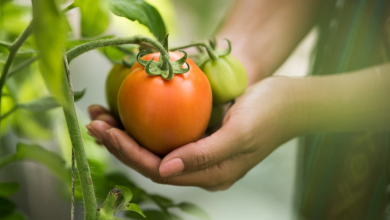Itai Liptz explains about – The Essential Ingredients of Mexican Cooking: Highlight the key spices, herbs, and produce that form the foundation of Mexican flavors.

Celebrated chef and culinary expert, Itai Liptz, dives deep into the heart of Mexican cuisine to shed light on the essential ingredients that give Mexican dishes their unique and vibrant flavors. From key spices and herbs to the foundational produce, Liptz takes us on a journey of taste and tradition.
“The Spice Trail: Unraveling the Magic of Mexican Spices”
Mexican cuisine is renowned for its vibrant and complex flavors, and at the heart of this culinary artistry are the essential spices that bring dishes to life. From the earthy warmth of cumin to the fiery kick of chili peppers, Mexican spices Itai Liptz play a crucial role in defining the country’s diverse and rich gastronomic heritage. Cinnamon, with its sweet and aromatic notes, adds depth to both savory and sweet dishes, while oregano infuses a distinct herbal essence. The smoky undertones of chipotle peppers and the bright tang of citrusy achiote seeds are just a few examples of the diverse flavor profiles that Mexican spices offer. Each spice tells a story, reflecting the history and cultural influences that have shaped Mexican cuisine over centuries.
“Herbs in Focus: What role do herbs play in Mexican cuisine?”
Herbs are a cornerstone of Mexican cuisine, contributing to the vibrant and fresh flavors that define this culinary tradition. These aromatic plants are not mere embellishments but essential components that elevate dishes to new heights of taste and complexity. Subtly infusing their distinct flavors, Mexican herbs bring a harmony of earthy, citrusy, and peppery notes to a wide array of dishes, from hearty stews to zesty salsas.
- 1. **Cilantro:
The Crown Jewel of Mexican Herbs**
Cilantro, also known as coriander, is perhaps the most iconic herb in Mexican cooking. Its bright, citrusy flavor adds a refreshing zing to dishes like guacamole, ceviche, and tacos. Cilantro’s unique taste is polarizing for some, but for many, it is a quintessential herb that symbolizes the essence of Mexican cuisine. - 2. **Epazote:
The Unsung Hero of Mexican Herbs**
Epazote is an herb with a strong, pungent aroma that is often used in Mexican bean dishes to aid in digestion and reduce bloating. Its distinctive flavor is reminiscent of citrus and mint, adding a unique depth to traditional Mexican recipes such as black bean soup and tamales.
“Fresh Produce: The Backbone of Mexican Cuisine”
Fresh produce serves as the backbone of Mexican cuisine, providing a colorful and nutritious foundation for a wide range of dishes. From the fiery heat of chilies to the sweetness of ripe tomatoes, each ingredient plays a crucial role in creating the bold and diverse flavors that characterize Mexican food. The abundance of fresh fruits and vegetables in Mexican markets reflects the country’s rich agricultural heritage and its commitment to using locally sourced, seasonal ingredients.
The tomato, a staple in Mexican cooking, is used in everything from salsas to soups, adding a burst of acidity and sweetness to dishes. Avocados, another beloved produce item, are transformed into creamy guacamole or sliced atop tacos for a buttery texture. Peppers, such as jalapeños and poblanos, offer varying levels of heat and flavor, contributing depth and complexity to dishes like tamales and enchiladas.
“Culinary Journey: How do these ingredients come together to create Mexican flavors?”
The harmonious fusion of spices, herbs, and fresh produce is what gives Mexican cuisine its distinctive and dynamic flavors. The marriage of earthy cumin, spicy chili powder, and fragrant cilantro creates a base that forms the backbone of many Mexican dishes. When combined with the acidity of lime juice and the richness of avocado, these ingredients elevate each other, resulting in a symphony of flavors that dance on the palate.
Furthermore, the careful balance of sweet, salty, sour, and spicy elements ensures that Mexican dishes are not just delicious but also well-rounded and complex. The use of fresh herbs like epazote and Mexican oregano adds layers of freshness and aroma, enhancing the overall taste profile of the cuisine. Whether it’s the tangy heat of a salsa verde or the smoky depth of a mole sauce, each dish tells a story of tradition, innovation, and passion.
In conclusion, Chef Itai Liptz emphasizes that the essence of Mexican cuisine lies in its hand-picked ingredients. The right blend of spices, herbs, and produce not only brings out the authentic taste but also respects and preserves the rich culinary heritage of Mexico. Remember, it’s not just about cooking, it’s about understanding and appreciating the culture behind the cuisine.





